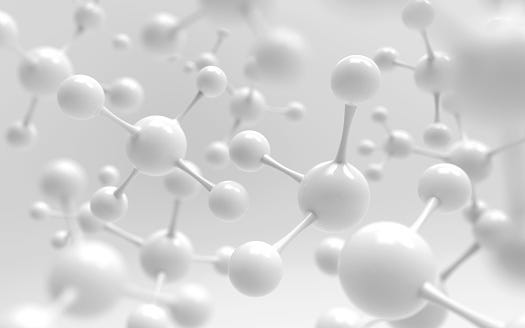White biotechnology
Biotechnology in the Industrial Sphere

Biotechnology has a wide area of application that plays a very important role in our daily life. There is one important field of biotechnology known as ‘White biotechnology’.White biotechnology is just an implementation of biotechnology in the industrial sphere that helps the growing bioeconomy. The primary key tools of white technology are Biocatalyst. Biocatalysts are widely used in various chemical and agro-food industries.
Biocatalysts are new enzymes and microorganisms that are the improved version of enzymes that act as a toolbox that is used in evaluation techniques that are applied in Enzyme engineering.
Now, the question is why this biotechnology is known as white biotechnology the answer is when we apply application part of this field in our daily life during the practical process we use molds, bacteria, yeast, and different enzymes that help to synthesize products that are easy to degrade, they create less waste and for their function, they require less energy for their production. In short, we can say that white biotechnology has stricter environmental regulations and helps to grow a mass of biodegradable products.
The role of white biotechnology sees in many innovations in the chemical, food, packaging, health care industries, and textile industries also.
The major Application part of White Biotechnology :
- Production of energy from renewable biomasses
- Production of biodegradable plastics
- Role in Recovery of metals
- Helps in the production of Bio-Based fuel & Energy
- White biotechnology used in waste treatment
- Production of Different types of metabolites
- White biotechnology application part in the production of Biocontrol agent
Let's discuss all major application parts of White Biotechnology :
1. Production of energy from renewable biomasses
White biotechnology helps in the production of energy from renewable biomasses( renewable biomasses are like starch from corn, Potatoes, organic matter such as wood, crop waste Garbage, etc) the are known as biopower technologies that help to convert renewable biomass fuels into heat and electricity. It is a conversion process like the conversion of stored biomass to produce biopower. These types of energy are helpful to reduce pollution in our environment.
2. Production of biodegradable plastics
As we see in our daily life we use plastics in very large amount which leads us to cause degradation of our environment because they are non-biodegradable and causes environmental pollution that shows a destructive impact on living organisms. So, replacement of this harmful plastic is required to reduce its impact on our environment. In white biotechnology, there is one important application part that is known as the Production of biodegradable plastics.
PHBs ( Polyhydroxybutyrates ) are macromolecules synthesized by bacteria known as Ralstonia eutropha that is synthesized from acetyl CoA growing on glucose. PHBs are the alternative source for producing biodegradable plastics that helps evaluate environmental pollution. PHBs are stricter environmental regulations.
3. Role in Recovery of metals
In the White biotechnology field, several bio-based technologies are used for various research and development activities. White biotechnology offers pyrometallurgical technology and biohydrometallurgy that is very helpful in the recovery of metal. These methods are constructive, show lower environmental impact, or be cost-effective compared to conventional methods.
4. Helps in the production of Bio-Based fuel & Energy
White biotechnology has the greatest contribution to the production of ethanol i.e. greatest contribution to energy production. White biotechnology helps in the production of biofuels that are helps to control environmental pollution, help to decrease oil prices, and increase the advancement to promote the development of alternative energy.
5. White biotechnology used in waste treatment
In biotechnology, there are different types of methods like -activated sludge, trickling filters, oxidation ponds, biofilters, and anaerobic methods that are biological techniques based, are used in waste treatment.
6. Production of Different types of metabolites
The white biotechnology field shows advanced technologies for the production of various types of metabolites either primary metabolites or secondary metabolites.
Primary metabolites like amino acids, nucleosides, etc are used in various processes such as fermentation or chemical synthesis and are rarely used in therapeutic compounds.
Secondary metabolites are low molecular mass that is produced during the idiophase of microorganisms. They are used for human health and the economic purposes of our society.
7. White biotechnology application part in the production of Biocontrol agent
White biotechnology plays a very important to control various organisms like vertebrates, fungi, bacteria, viruses, mites, insects, and natural chemicals. Biocontrol agents are those that help to control and for the protection of resources that are not good for human beings. These biocontrol agents will be developed using GM technologies. For example, FBCAs ( Fungal biocontrol agents) produce mycotoxins ( toxigenic fungi) that are useful to control unwanted vegetation.
Like all technologies, white biotechnology provides enormous benefits that are very beneficial to our environmental health. By using this technology we have to solve problems and make useful products.
Reference
Arda Isildar et al ( 2019), “ Biotechnological strategies for the recovery of valuable and critical raw materials from waste electrical and electronic equipment (WEEE)”-A review.Journal of Hazardous Materials, Volume 362, Pg-467–481.
https://bmcresnotes.biomedcentral.com/articles/10.1186/s13104-016-2321-y
S.Heux et al( 2015), “ White Biotechnology: State of the art strategies for the development of biocatalysts for biorefining”.Biotechnology Advances Volume 33, Issue 8, Pg: 1653–1670.
www.ncbi.nlm.nih.gov PubMed
Image Reference
https://media.istockphoto.com/photos/white-molecule-or-atom-picture-id924641250?b=1&k=20&m=924641250&s=170667a&w=0&h=0pSo1jOwb-01BYV0EK1boIizfqmAlNsgxf7pvI6nFhs=
Comments
Post a Comment
Please do not enter any spam link in the comment box.